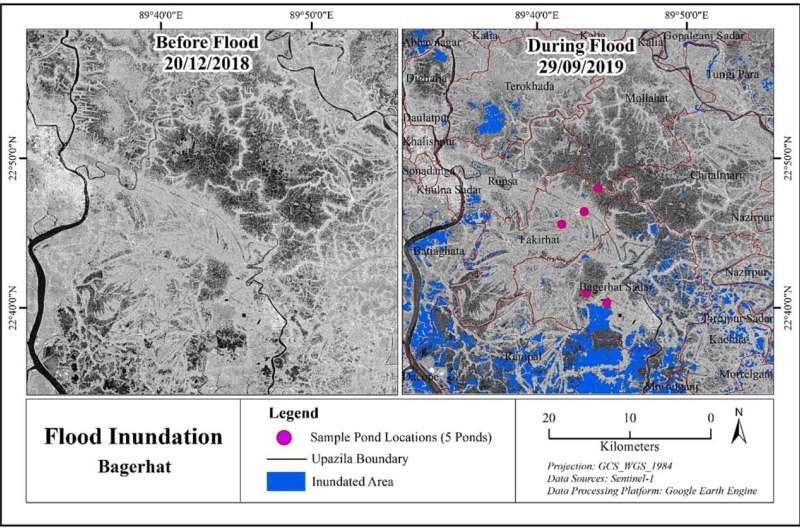Bangladesh’s aquaculture sector lost US$140 million in a decade due to climate change, reveals new analysis, highlighting the need for better climate data services. Bangladesh is highly vulnerable to extreme weather events which are predicted to increase in the near and distant future, according to the study published in Climate Risk Management.
It said effective climate information services could help fish farmers reduce aquaculture losses caused by such events. Flooding appears to be the most financially damaging and regularly occurring hazard for hatcheries, open water fish and shrimp, the study said. Between 2011 and 2020, floods resulted in the estimated loss of about 54,000 tons of aquaculture production, valued at US$93 million.

Cyclones were the second most damaging, causing the loss of 12,000 tons of fish products, worth a total of US$24.8 million. “Climate information services are a potential climate-risk reduction approach that could de-risk the aquaculture sector by supporting fish farmers’ climate resilient decision-making and production management processes,” the study said. These services provide climate data that can support adaptation, mitigation and risk management decisions. According to the analysis, countries in the global South have tended to be slow in developing climate services for aquaculture due to lack of awareness about their economic benefits and the focus of such tools on crops.
Peerzadi Rumana Hossain, WorldFish scientist and lead author of the study, said implementation of climate services in aquaculture depended on support from policymakers. “We have already worked with the Bangladesh Department of Fisheries on developing a few propositions for policy level inclusion,” Hossain told SciDev.Net. She said climate information generated by the Bangladesh Meteorological Department could be conveyed via the fisheries department to help the sector produce advisories and manage climate risks. “There is also a need for involvement and investment from private sectors for the sustainability of the digital platforms for providing climate information and advisory services to all value chain actors of aquatic food systems in the country to enhance climate services at scale,” Hossain added.
More than 91% of global aquaculture production (102.9 million tons in 2017) is currently produced in Asia, with Bangladesh ranking fifth globally after China, Indonesia, India and Vietnam. Fish and fish-based foods supply 60 percent of the total daily animal protein intake for Bangladesh’s population, significantly contributing to nutrition and food security for the vulnerable and marginalized people of the country.
Aquaculture and fisheries contribute nearly 26% to the agricultural gross domestic product of Bangladesh, the study says. But fish farmers are increasingly impacted by climate driven extreme weather events, while data on climate variability—such as erratic rain, heat waves and cold spells—in aquaculture are scarce in the country. This makes it challenging to evaluate climate risk management interventions, the analysts say.